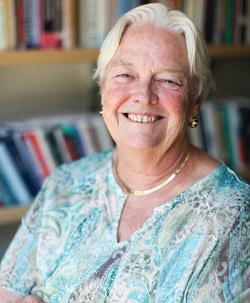Eccles is a distinguished professor in the UCI School of Education and director of UCI's Motivation and Identity Research Lab (MIRL). She also is a member of the National Academy of Education, a World Scholar at the University of London, Visiting Professor at the University of Tubingen, Germany, and Research Fellow at the Australian Catholic University, Sydney, Australia. Her academic research focuses on gender-role socialization, classroom influences on student motivation, and social development in the family and school context. She is internationally recognized for her development of the expectancy-value theory of motivation and her concept of stage-environment. Watch Eccles discuss her research with Dean Richard Arum here (32:00).
Abstract At the onset of the global pandemic of COVID-19 (SARS-CoV-2), guidelines recommended using regional anaesthesia for caesarean section in preference to general anaesthesia. National figures from the UK suggest that8.75% of over 170,000 caesarean sections are performed under general anaesthetic. We explored whether general anaesthesia rates for caesarean section changed during the peak of the pandemic across six maternity units in the north-west of England. We analysed anaesthetic information for 2480 caesarean sections across six maternity units from 1 April to 1 July 2020 (during the pandemic) and compared this information with data from 2555 caesarean sections performed at the same hospitals over a similar period in 2019. Primary outcome was change in general anaesthesia rate for caesarean section. Secondary outcomes included overall caesarean section rates, obstetric indications for caesarean section and regional to general anaesthesia conversion rates. A significant reduction (7.7to 3.7%, p<0.0001) in general anaesthetic rates, risk ratio (95%CI) 0.50 (0.39–0.93), was noted across hospitals during the pandemic. Regional to general anaesthesia conversion rates reduced (1.7 to 0.8%, p=0.012), risk ratio(95%CI) 0.50 (0.29–0.86). Obstetric indications for caesarean sections did not change (p=0.17) while the overall caesarean section rate increased (28.3 to 29.7%), risk ratio (95%CI) 1.02 (1.00–1.04), p=0.052. Our analysis shows that general anaesthesia rates for caesarean section declined during the peak of the pandemic. Anaesthetic decision-making, recommendations from anaesthetic guidelines and presence of an on-site anaesthetic consultant in the delivery suite seem to be the key factors that influenced this decline. Comments are closed.
|
Resources for:
|
|


